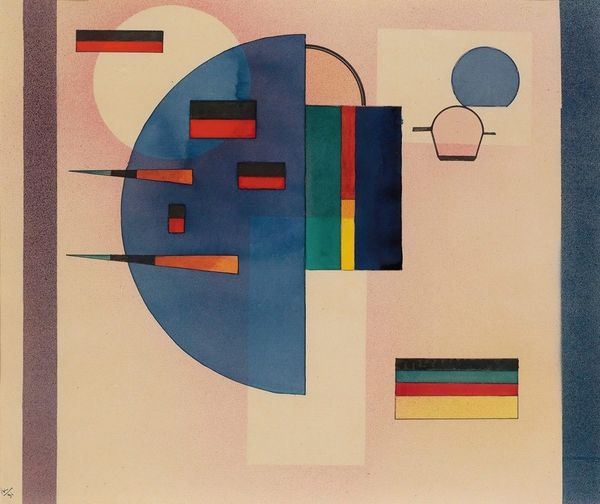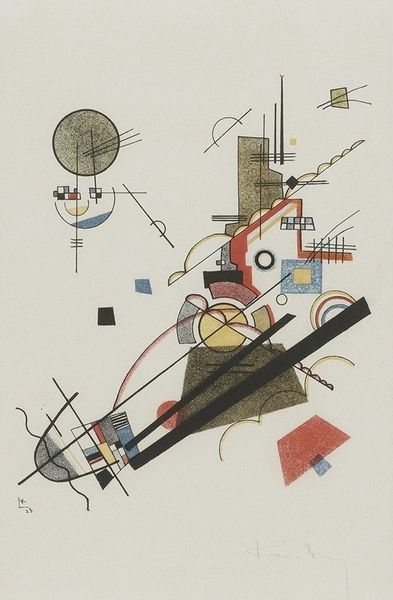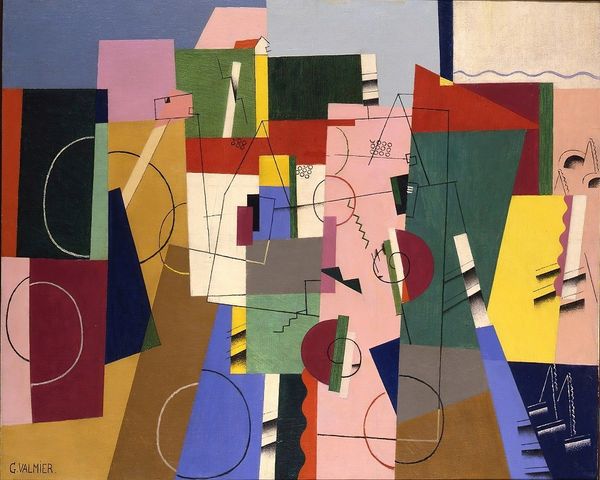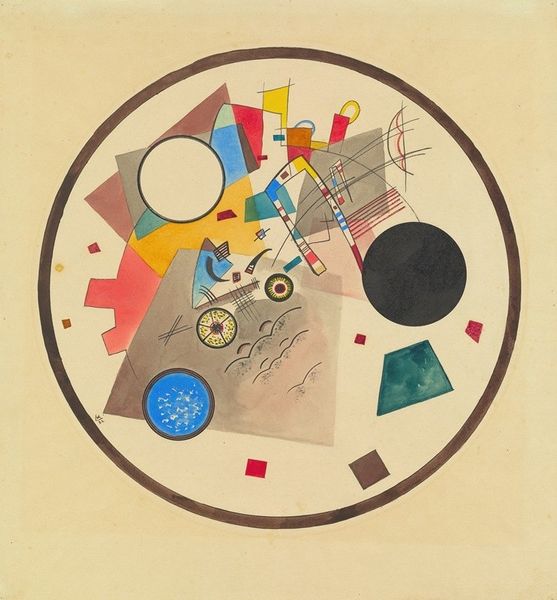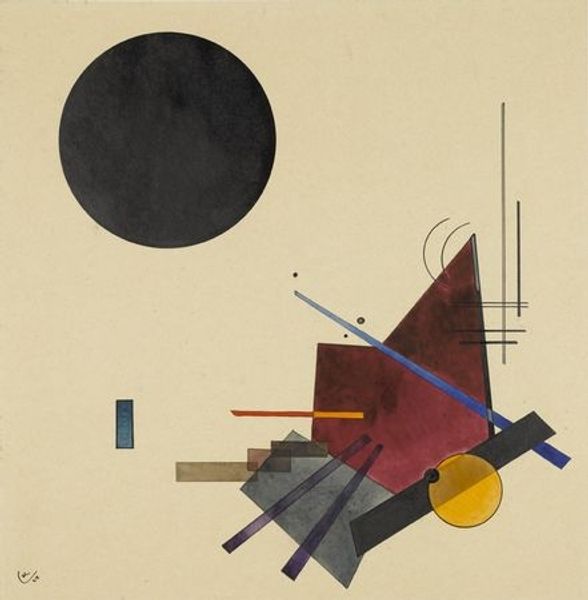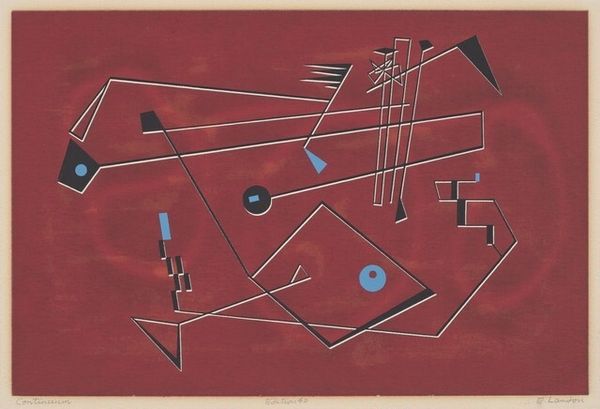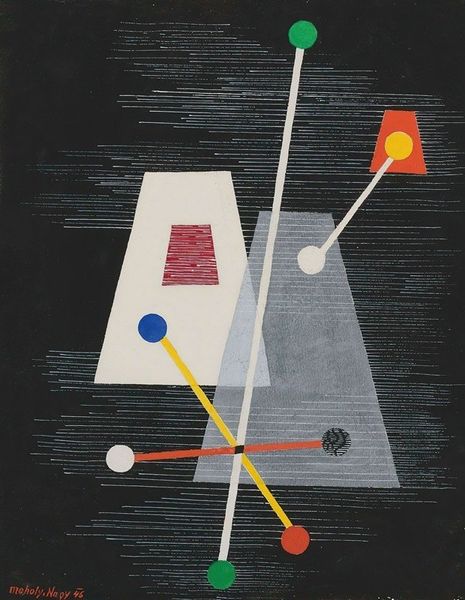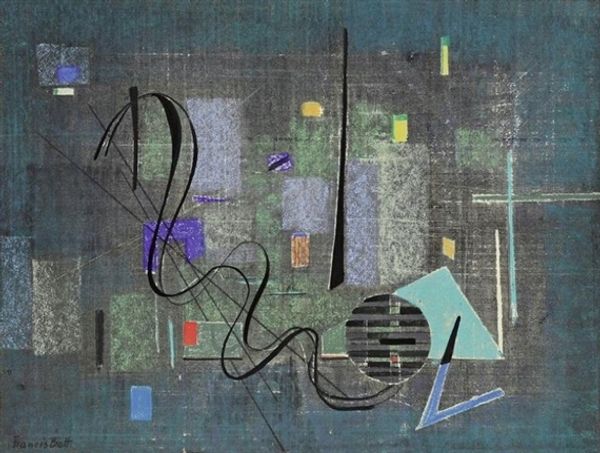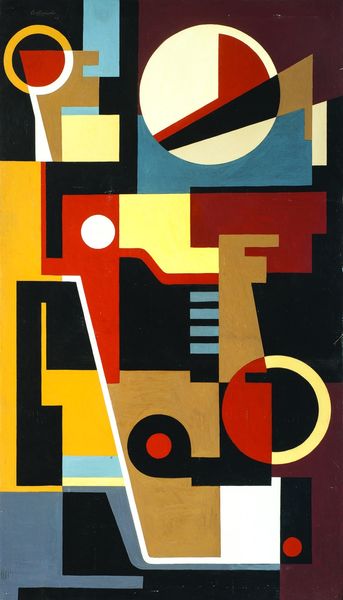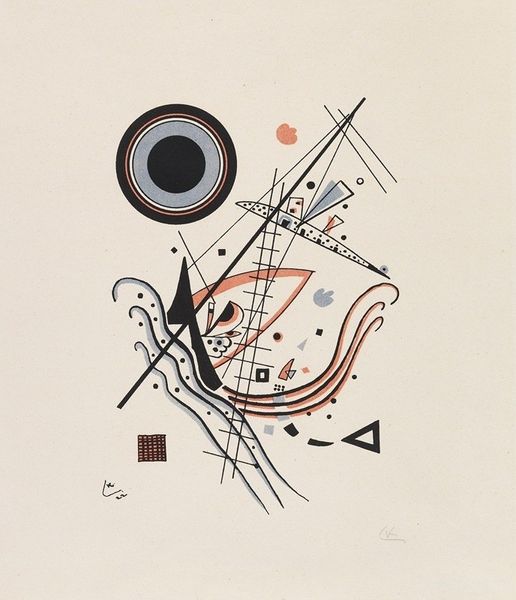
Copyright: Public Domain: Artvee
Wassily Kandinsky created "Dumpfes Rot," using oil to convey a world of pure abstraction. Look closely, and you’ll see how lines and shapes dance against a muted red ground. The crosses, repeated in varied forms, echo ancient symbols of intersection and transcendence. Their presence resonates with the cross found in early Christian iconography or even older, pagan symbols of the cosmos. The grid, a stark geometric structure, perhaps speaks to a human desire to order and contain the chaotic forces of the universe. Consider how similar grid-like patterns appear in ancient Roman city planning, or the structured layouts of Renaissance paintings. Though Kandinsky’s forms appear divorced from explicit representation, they draw on a deep well of collective memory. The colors too, contribute to this emotional landscape. This intense red evokes a deep, almost subconscious stirring, hinting at both warmth and potential danger. It creates a powerful force, engaging viewers on a deep, subconscious level. This symbolic language has resurfaced, evolved, and taken on new meanings in different historical contexts.
Comments
No comments
Be the first to comment and join the conversation on the ultimate creative platform.
